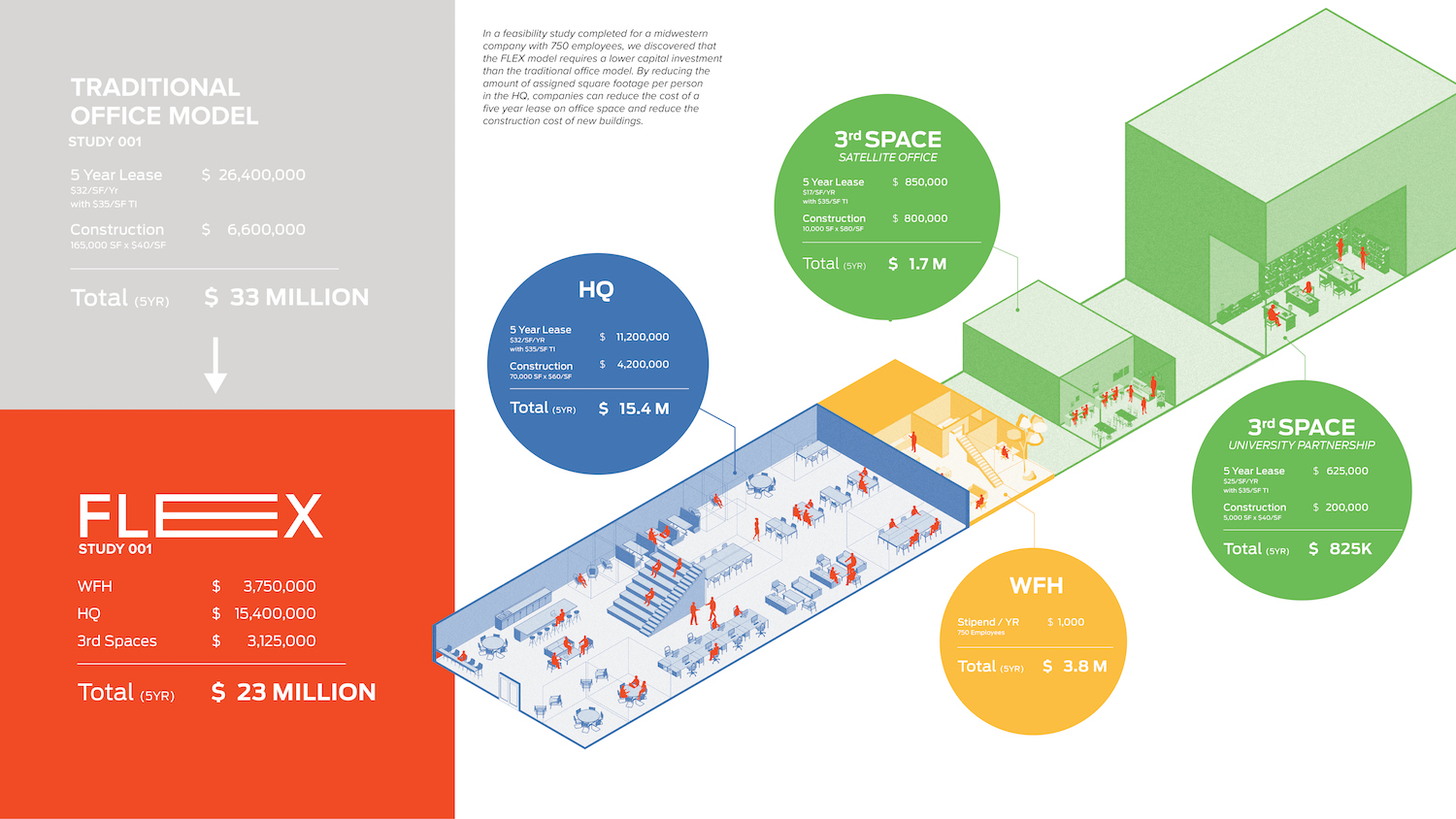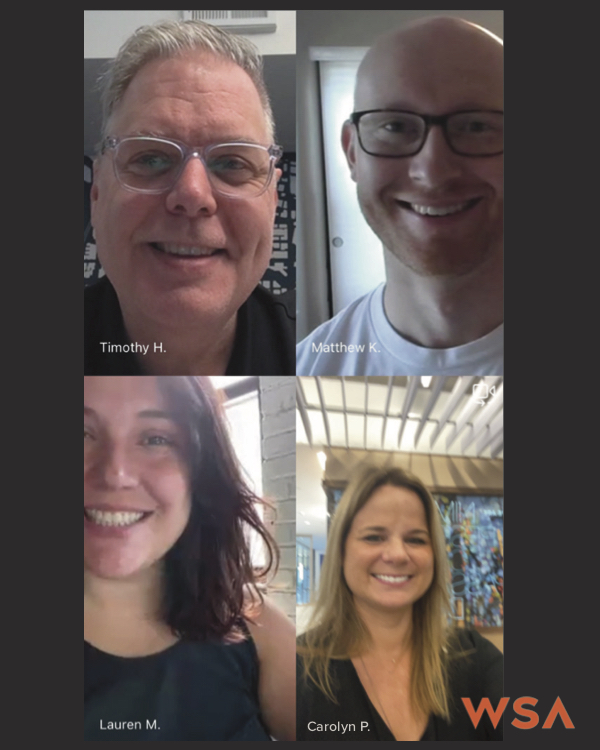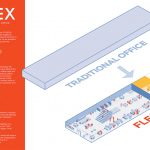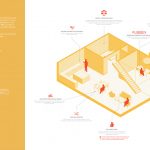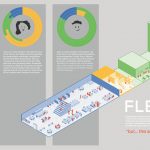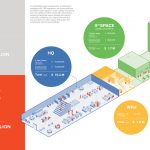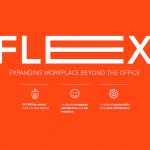Meet the WSA Studio team: honorable mention in the Flexwork category.
Timothy Hawk, President
Lauren Miller, Design Manager
Matthew Kisseberth, Design Specialist
Carolyn Price, Experience Design Manager
Check out their submission:
This is a theoretical project envisioned by the team.
The COVID-19 pandemic was a catalyst for overarching change, pushing our understanding of the workplace beyond the traditional office building. While only 6% of employees in the United states worked from home in 2019, over 70% worked from home during the COVID-19 pandemic. As we transition to a post-pandemic world, many organizations are grappling with the question, “What happens now?” While some companies have moved to a fully remote work model, most recognize the benefits of a corporate office space.
People miss the collaboration, amenities, and socialization provided by a traditional office. At the same time, many employees have found working from home to be beneficial for their work and personal lives and want to maintain remote work as a viable option. Beyond this dichotomy, we envision a new trend towards a true hybrid workstyle with flexibility at the center. As people return to the office in various capacities, we’re witnessing the birth of additional workplace typologies. This trend doesn’t simply abandon the corporate office or home office, but extends work beyond conventional boundaries and reimagines how to use every workspace more efficiently.
Traditional third spaces like libraries and coffee shops have been supplemented with a boom in coworking environments. Businesses have provided stipends for employees to create a practical, permanent home office. However, none of these work environments alone can sufficiently meet the needs of companies and their employees. The future of work requires all spaces to flex and function together as a comprehensive unit. Corporate headquarters, home offices, and third spaces will all shift to serve different purposes as part of a larger “work-from-anywhere” scheme. To make work-from-anywhere really work for everyone, the world will need to continue adapting.
The FLEX Model re-examines the way we use corporate headquarters, home offices, and third spaces to ensure the future of work is accessible, diverse, and productive for every type of worker. When developing an approach to the FLEX Model, it’s imperative to consider the needs of each organization individually. From a macro to a micro scale, each company, department, and employee will work differently. Therefore, the way the HQ, WFH, and Third Spaces are utilized will constantly vary and may shift over time. By leaning on shared resources and workspaces, organizations can reduce the size of the HQ and save real estate and operational costs while keeping employees engaged.
Click on an image to see it full size.
To celebrate their win, we connected with the team to see how their idea evolved since it was submitted.
“Our team has worked with three clients to implement flexible work environments for their workforce. Collaboration with our clients led to retrofitting their buildings to tailor their workspaces to support specific work styles and tasks. Employees can now choose between working from home, in a building designed for quiet heads-down tasks, or a third space created for active collaboration. Strategically located within walking distance, employees can easily access both environments as their day evolves.
With a more fluid workforce and sharpened lens for safety, our clients needed a means to reserve and track capacity in these spaces. Our team delved into research, turning to technology to propel our idea into implementation. We found an app that our clients customized to mirror their new spaces. Employees download the app to check-in to their virtual office and reserve a workplace for any given amount of time. With a seamless and successful roll-out, employees are enjoying their improved office spaces and the company leadership maintain safety protocols with the anticipation of an increase in productivity and employee retention.”
Comments from the Jury:
I love that there is a consideration of the overarching, corporate real estate considerations for where people can work and how we can actually enable some of that by expanding, what our definition of workplace is really is. I think that it’s perfect timing for the pandemic and some of the discussions that we’re having as an industry about what the future of work is going to look like. This was great.
Not only has this team thought about the potential of design and the proportions of space needed within each of these types of environments, but they’ve also thought about how organizations could justify the business model and really pushing the envelope in terms of asking organizations to invest not only in the headquarters, but also in this third space, and most importantly, in an employee’s work from home environment, which may not be set up for optimal working.
🏆 Did this submission earn your vote? Vote for the People’s Choice award here! 🏆
Voting ends September 24th – one vote per person.
A special thank you to our sponsors:

